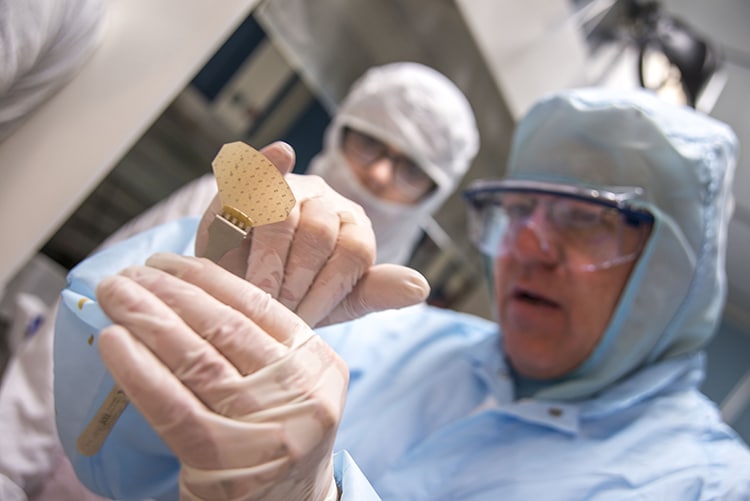
A Republican and Democrat agree: Strong UMaine strengthens state’s future
By Richard A. Bennett and Mary Cathcart
This year we celebrate the University of Maine’s 150th birthday. At the end of the Civil War, our state, like many others, received support from the federal government to establish a public university dedicated to the ideal that all qualified young people should have affordable access to a high-quality college education.
This development was remarkable in two ways. This marked the first time here or in Europe that higher education was opened to smart young people with limited means. Previously, most university students came from privileged families. Second, President Abraham Lincoln and Congress passed the enabling legislation during the Civil War, when even they could not be sure that the Union would endure. The Maine Legislature then passed the bill creating the University of Maine on Feb. 24, 1865, and Gov. Samuel Cony signed the bill the following day.
We are pleased that Gov. Paul LePage, in his new budget, has included increased support for the University of Maine System, and in particular for the Maine Economic Improvement Fund, which was formed to increase the ability of University of Maine researchers to compete for external grants and contracts. Strong regional economies across the country almost always have powerful research universities as the driver for innovation and job creation. Many other states have long invested in their universities so that their researchers are able to compete for nearly $30 billion in federal funds that are distributed annually, mostly through a tough, competitive, national process. Most states made those key investments in the years just after World War II. Maine was one of the last states to invest in its research infrastructure, beginning less than 20 years ago.
The two of us are proud to have worked together back in the late 1990s as the Maine Legislature undertook a strongly bipartisan initiative to change that. We had the honor of being appointed by Senate President Mark Lawrence as the bipartisan co-chairs of a Select Committee on research and development. Our committee reported back to the Legislature in early 1998 with recommendations for legislation designed to help the University of Maine become a legitimate competitor for the research funds. Among other things, that legislation established the Maine Economic Improvement Fund, which has been crucial in allowing University of Maine researchers to compete. (Maine Economic Improvement Fund funds are not used directly for research. Instead, they ensure the institutional infrastructure and sometimes matching funds needed to compete successfully in the national grants programs.)
This Maine Economic Improvement Fund is the same fund to which LePage has proposed additional funding for each of the next two years.
Have the investments made since about 2000 been helpful in making the University of Maine more competitive? The answer is a resounding yes. It would be an understatement to say that our select committee would have been thrilled to know that such large changes could take place so rapidly.
In the past 15 years, annual research activity at the University of Maine, as measured by the National Science Foundation, has increased by a factor of five, from about $25 million to nearly $120 million, putting the University of Maine in the top 100 of public research universities. Within the next year or two, researchers in Orono will have earned a total of $1 billion in outside grants and contracts since 2002. That is 10 times what the state has put toward that effort. Innovative ideas from University of Maine researchers have led to nearly 150 patents; those normally take about a decade to lead to results in the marketplace, but the process is finally underway. University of Maine faculty and students have worked with hundreds of Maine businesses to help develop new manufacturing processes and products. University of Maine researchers have succeeded in earning federal grants most years at rate of five to eight times the Maine Economic Improvement Fund funds leveraged, so the state investments have paid handsomely.
And, just as important, students in classes at Orono are being taught by professors who are national leaders in their disciplines, and who are bringing the very latest advances to the classroom. Furthermore, many of those students are involved in research with world-class faculty members. As a result, graduates of the University of Maine are highly competitive for professional careers of their choice in the various high-tech industries — from advanced manufacturing and advanced composites, to the life sciences and marine biology, and many others.
A recent study in Massachusetts concluded that our neighboring state would have a shortage of 60,000 highly educated tech workers by 2025, and that even today, the state is short at least 5,000 workers in computer science and information technology. Obviously, Maine cannot depend on other states to supply our needs in science and technology.
But we can compete. Let’s not let the other states have all of the research funds distributed to our nation’s university researchers. In fact, University of Maine researchers have a success rate of about 35 percent for proposals submitted to the National Science Foundation. The national average is less than 10 percent, so we can be very proud of the Maine successes. As the governor’s proposal recognizes, we need to keep increasing our capacity to compete if we are to deliver on the promise of prosperity and opportunity that is knocking at Maine’s door.
Hon. Mary Cathcart, a Democrat from Orono, served in the Maine Senate from 1996-2004 and in the Maine House from 1988-94. In 2013, she was inducted into the Maine Women’s Hall of Fame. Hon. Richard A. Bennett, a Republican from Oxford, served in the Maine Senate from 1996-2004, including a term as Senate president, and in the Maine House from 1990-94. He is chairman of the Maine Republican Party.
Originally published in the Bangor Daily News
